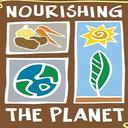By Catherine Njuguna
Millions of cassava farmers in eastern and central Africa are in distress from viral cassava diseases that are sweeping across the region and ravaging their crops. But their counterparts on the popular tourist island of Zanzibar are undergoing a quiet revolution using new disease-resistant and high-yielding varieties that were introduced three years ago.

Farmer Ramadhani Abdala Ame, one of the pilot farmers in Kianga village with his improved cassava variety that he has uprooted for home use. (Photo credit: Catherine Njuguna)
(Image by Unknown Owner) Details DMCA
Farmer Ramadhani Abdala Ame, one of the pilot farmers in Kianga village with his improved cassava variety that he has uprooted for home use. (Photo credit: Catherine Njuguna)
The four varieties, Kizimbani, Mahonda, Kama, and Machui, have given cassava a new lease on life after the crop was devastated by the two main diseases afflicting the region: brown streak disease and mosaic disease. The diseases, which are spread by white flies, cost Africa's cassava sector more than US$1 billion in damages every year. Small-scale farmers among the poorest in the region bear most of the economic effects.
Cassava mosaic disease first appeared in Uganda in the mid-1980s and spread rapidly in cassava-growing areas of eastern and central Africa through the sharing of infected planting materials and via the white fly vector. Following the development and deployment of resistant and tolerant varieties and widespread awareness-raising on ways to curb the mosaic's spread, scientists, governments, non-governmental organizations, and farmers were able to bring the disease nearly under control. Then the cassava brown streak struck. This disease had been around for much longer but was confined to the coastal low-altitude areas of Eastern Africa and around Lake Malawi. From 2004, it started spreading rapidly to mid-altitude areas that were recovering from the mosaic, sending scientists back to the drawing board.
Haji Saleh, the head of Zanzibar's roots and tuber program under the Ministry of Agriculture, Livestock and Environment, says the first survey of cassava brown streak on the island was conducted in 1994 and indicated that 20 percent of the crop had disease symptoms. In a follow-up survey in 2002, the disease was found everywhere. "All the local varieties grown by the farmers were susceptible. The farmer and authorities were crying out for help," Saleh said.
A field of recently planted cassava cuttings that are starting to sprout leaves. (Photo credit: Catherine Njuguna)
Heeding the call for help, Zanzibar crop scientists in collaboration with the International Institute of Tropical Agriculture (IITA) started a breeding program to develop cassava varieties that were resistant to the two diseases. Their efforts paid off, and after only four years, four new varieties were released in 2007.
"You have to understand, cassava is a very important staple in Zanzibar, where it comes in second after rice," Saleh said. "However, it is first in terms of acreage and production with over 90 percent of farmers growing the crop. It is our food security crop as it grows in most of the agro-ecological zones including in the dry parts of the island where other crops do not perform well. So when the diseases hit, they were very devastating to the island's food security. We had to act fast."
The research team then started a rapid multiplication program, working with the farmers to spread the improved varieties on the island and beyond. "We selected pilot farmers in each district to help with the multiplication," Saleh said. "We trained them on how to grow cassava to get good yields and maintain soil fertility, and on business skills, as they were to sell the planting material as a business."
One farmer, 59-year-old Ramadhani Abdala Ame of Kianga village a father of 10 participated in the on-farm trials using the improved varieties. During the trials, the farmers helped the researchers select not only the best performing varieties, but also those that met farmer preferences and requirements for various uses of the crops. Ramadhani said he had given up on cassava, which was suffering from "kensa ya mhogo," or "cancer of the cassava." Infected by the brown streak disease, the crop develops a dry rot in its roots the most economically important part of the plant which makes it useless for consumption.
"The cassava looked good in the field, but when you harvested, the roots were rotten and useless, with all your labor and efforts going down the drain," Ramadhani said. He explained that he was given 40 cuttings of the four new varieties to test on his farm. "At that time, they did not have names, only numbers. I was amazed at their performance: the tubers were huge, and had no disease. I selected the two I liked best that were later renamed Kizimbani and Machui."
Ramadhani said the sale of cassava roots and planting materials has made a big difference in his life. He has bought two cows to add to his stock, constructed a cowshed, and is now building a better brick and iron-sheet house for his family.
Another pilot farmer, Suleiman John Ndebe of Machui village, had also given up on cassava after 10 years of bad harvests due to the "cancer" and other pests and diseases such as mealy bug and cassava green mite. But the varieties given to him at Kizimbazi research station for testing excited him and motivated him to resume growing the crop. It's a decision he says he has not regretted.
Freshly harvested cassava roots infected with the cassava brown streak disease that causes a dry rot in the roots rendering them useless. (Photo credit: Catherine Njuguna)
(Note: You can view every article as one long page if you sign up as an Advocate Member, or higher).







